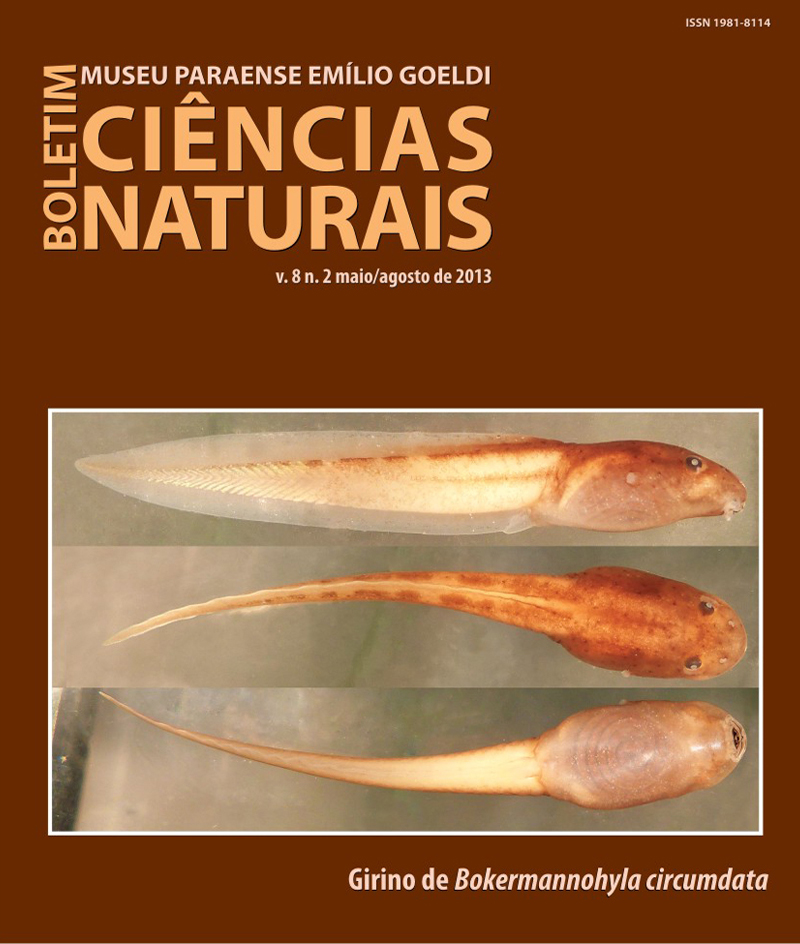Floristic and tree structure of forest islands in savanna areas of Northern Brazilian Amazonia
DOI:
https://doi.org/10.46357/bcnaturais.v8i2.573Keywords:
Diversity, Lavrado, Roraima, Seasonal forestAbstract
Forest islands are isolated forest fragments found in Amazonian savanna-forest transition zone of the neotropics. Information on tree communities of these formations is necessary to establish conservation policies which protect these paleoclimatic forest remnants. A forest inventory was carried out in tree communities of four seasonal forest islands in the savanna of Roraima, northern Brazilian Amazon. Two islands were defined as small (5-10 ha), one as medium (10-20 ha) and one as large (20-60 ha). All islands were disturbed by selective logging and fire. We sampled 470 individuals with diameter at Breast Height (DBH) ≥ 5 cm comprising 52 species, 41 genera and 25 families. The most species-rich families were fabaceae (11) and sapotaceae (6). Most species were pioneers (55.8%). Abarema jupunba (fabaceae) and Chrysophyllum argenteum (sapotaceae) were common in the four fragments. Greater floristic similarity was detected between the medium and large islands. Intensity and time scale of post-disturbance strongly influence tree community dynamics, and obscure a clear pattern between horizontal structure (number of individuals, DBH and basal area) and size of forest islands, although fragment size significantly affected species richness and diversity.
Downloads
Published
Issue
Section
License
Publication means fully assigning and transferring all copyrights of the manuscript to the journal. The Liability Statement and
Assignment of Copyrights will be enclosed with the notice of acceptance. All the authors must sign the document and return it to the journal.








